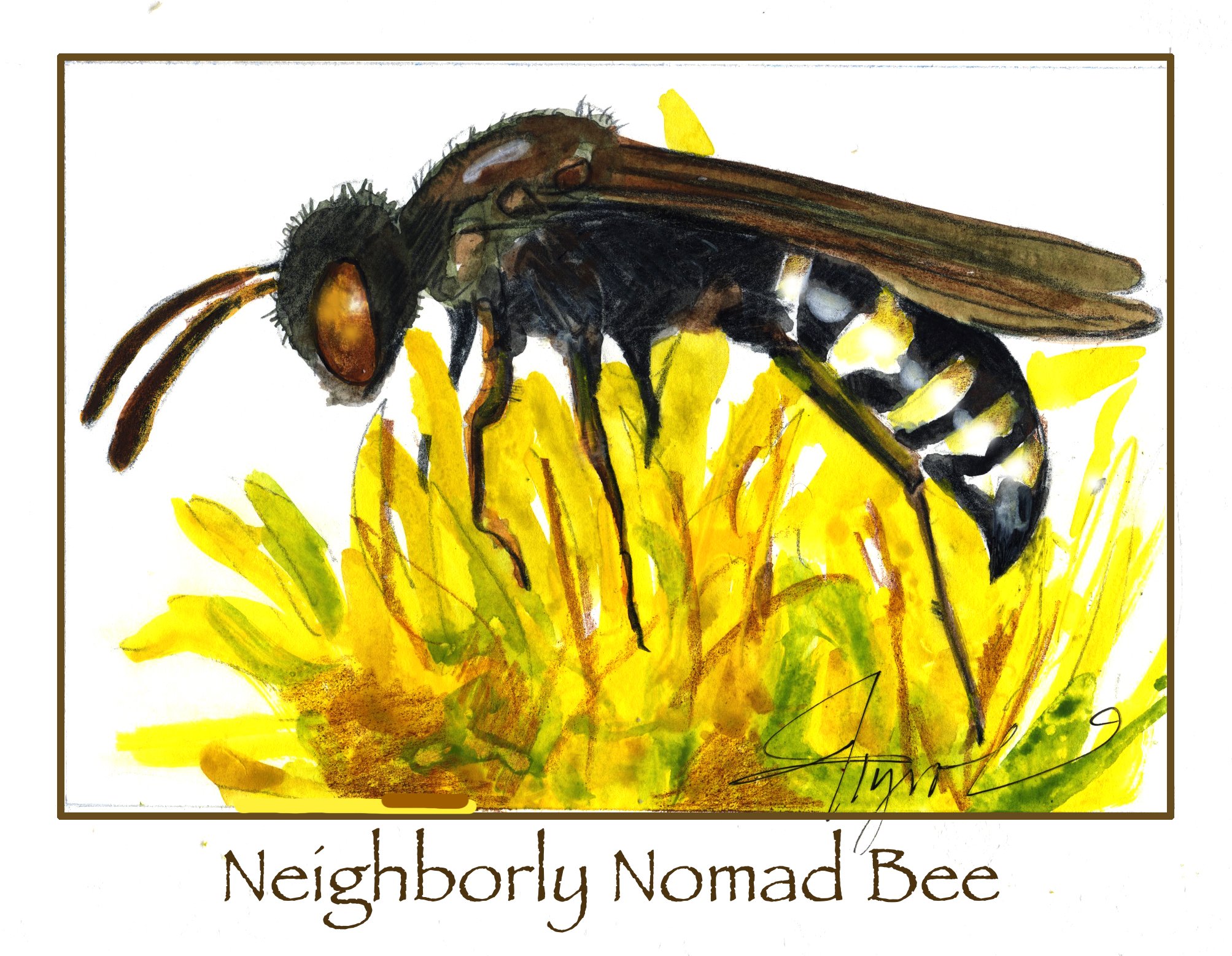Late-blooming flowers feed multiple types of native, wild bees
September 20, 2024 | By Emily Haynes | The Outside StoryIllustration by Adelaide Murphy Tyrol
As the height-of-summer floral abundance fades, goldenrods and asters fill the landscape with hits of yellow, purple, pink and white. Beyond the beauty they provide, these late bloomers are a critical food source for several native species of wild bees.
During late summer and fall, many specialist wild bees are active, said Spencer Hardy, a biologist at the Vermont Center for Ecostudies and project coordinator for its Vermont Wild Bee Atlas.
There are more than 350 species of wild bees identified so far in Vermont, according to the atlas. Their emergence is staggered throughout the year so that roughly a third of those species are active at a time, from spring through autumn. Unlike the domestic western honey bee, wild bees can’t rely on devoted beekeepers to stay healthy. Instead, they depend on a thriving habitat.
Wild bees are highly efficient pollinators, and they’re essential to agricultural production and ecosystem health, Hardy said. Bees gather pollen to feed their young, carrying it on their bodies and dusting it across other flowers as they forage. While some pollinators – such as flies, wasps, and butterflies – visit flowers to feed themselves on nectar and, in some cases, pollen, bees’ habit of collecting pollen often drives them to visit more plants.
One of the best ways to promote resilient wild bee populations is to plant native flora and allow meadows to stand through early fall.
“If you have a small field…if you wait until October to brush hog it, all the goldenrods and asters will bloom – as opposed to brush hogging it in July or August, when it’s going to stay as a stand of non-native grasses,” Hardy said. “Waiting [to mow] until after the blooms increases the diversity in the flowering resources in the meadow.”
Because different wild bee species feature minute distinguishing characteristics, they can be difficult to identify with the naked eye. A good way to start recognizing wild bees in the landscape is to learn about their behavior, including when they’re active and how they relate to certain plant species.
As you admire goldenrods and asters, you’re likely to see wild bees foraging for pollen on their blooms. Some species of wild bees have evolved as specialists in those flowers, meaning they’ve developed unique relationships with the plants, as well as behaviors and traits that make the bees especially good at collecting pollen from these flowers.
Aster cellophane bee (Colletes compactus) is one such specialist. As one of the latest wild bee species to emerge in Vermont each year, it depends on asters for food, although it will also visit goldenrod. These honey bee-sized bees start flying in August and can keep at it into October. They get their name not only from their special relationship with asters, but also from the cellophane-like material they use to waterproof their underground nests. The bees generate this material in a special gland and use their forked tongues to apply it to the walls of their nests.
The autumnal cellophane-cuckoo (Epeolus autumnalis) is a large, late-to-emerge, parasitic wild bee that lays its eggs in the nests of aster cellophane bees. When the autumnal cellophane-cuckoo larvae emerge, they kill the host larvae and eat the pollen the parent aster cellophane bees provided for their own offspring. Known as brood parasitism in birds, this tactic is common among birds in the cuckoo family.
Similarly, the neighborly nomad bee (Nomada vicina), another parasitic species in the cuckoo family, preys on the hairy-banded mining bee (Andrena hirticincta), which is a goldenrod specialist that also visits flowers in the mint family and is common in fall. Neighborly nomads are common in Vermont in the fall. Their bodies are black with yellow and red markings.
“When I find a bunch of nomads, it’s generally an indication of an abundant, diverse, stable host population,” Hardy said. “The hosts have to be there and have established nests. The parasites come in and maybe will keep the host populations a little bit subdued, or more stable.”
Even as the days get colder, bee activity continues, thanks in large part to the region’s many goldenrod and aster plants. And as long as those flowers are in bloom, the bees that rely on them will be buzzing around.
Emily Haynes is a writer currently living in Washington, D.C. An avid birder and hiker, she loves exploring the forests of the Northeast. The Outside Story is assigned and edited by Northern Woodlands magazine and sponsored by the Wellborn Ecology Fund of the New Hampshire Charitable Foundation.

